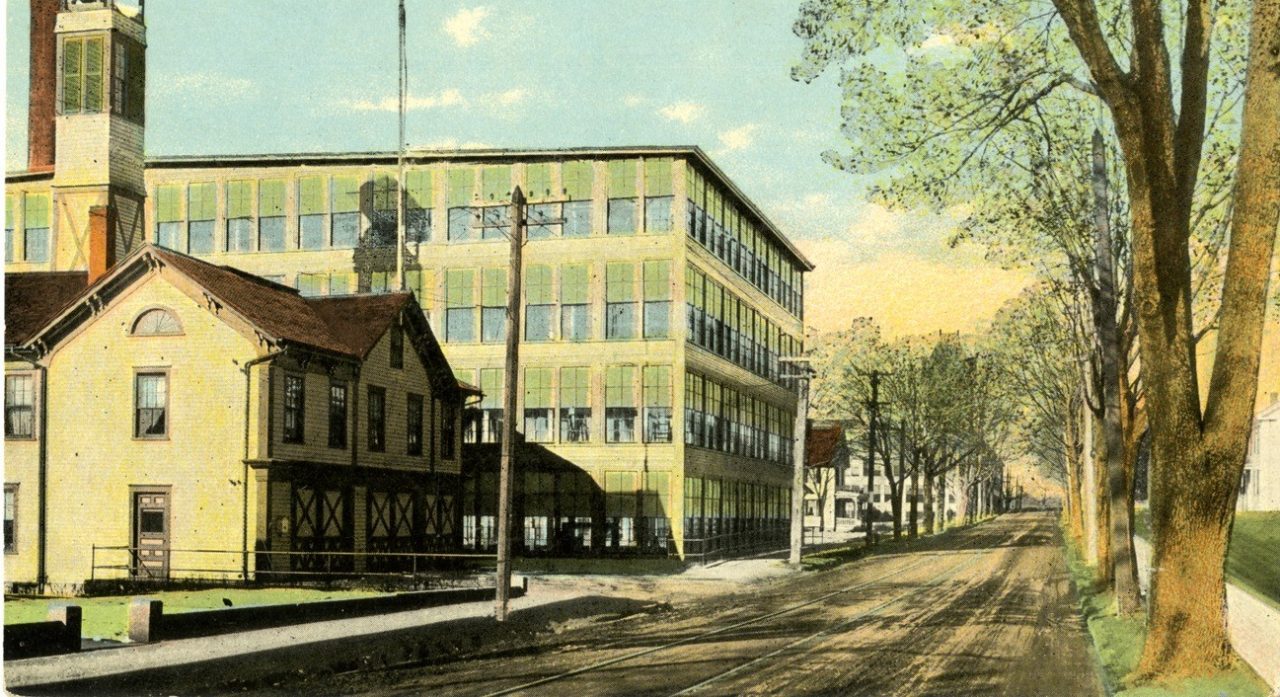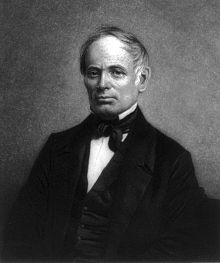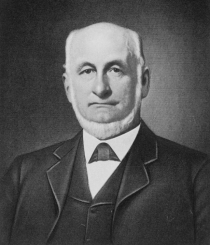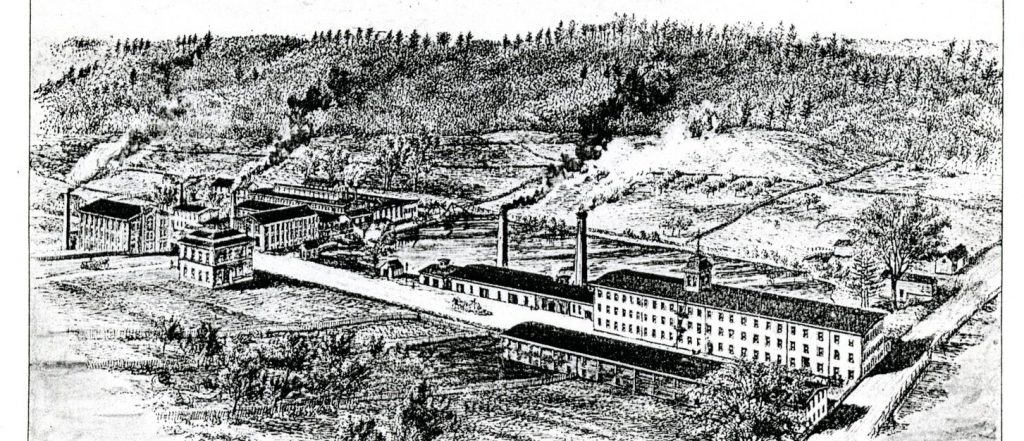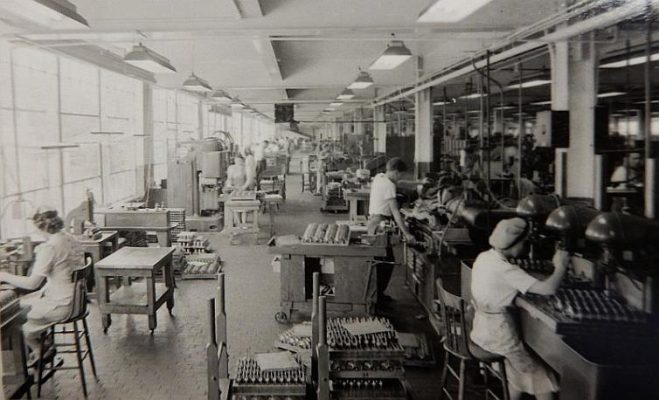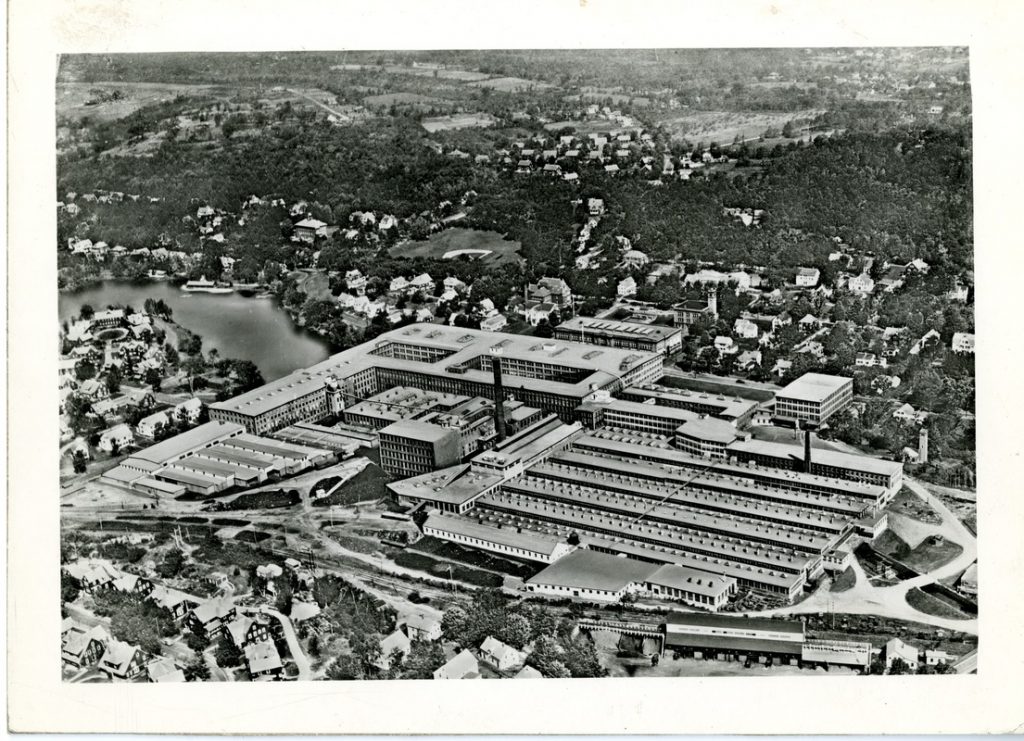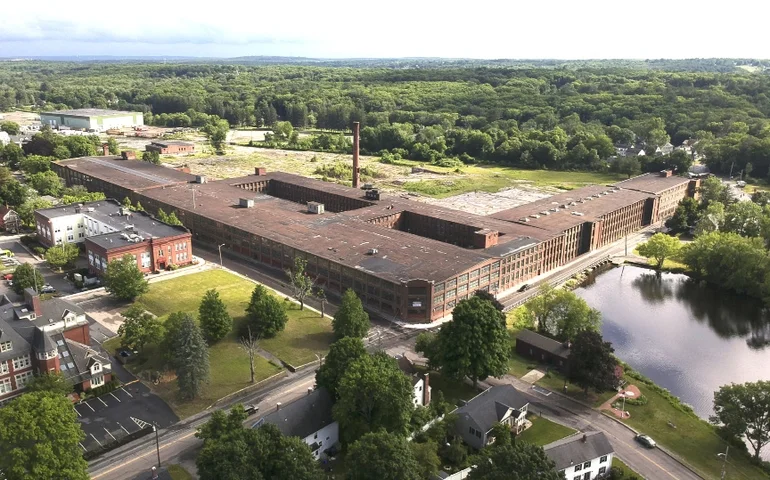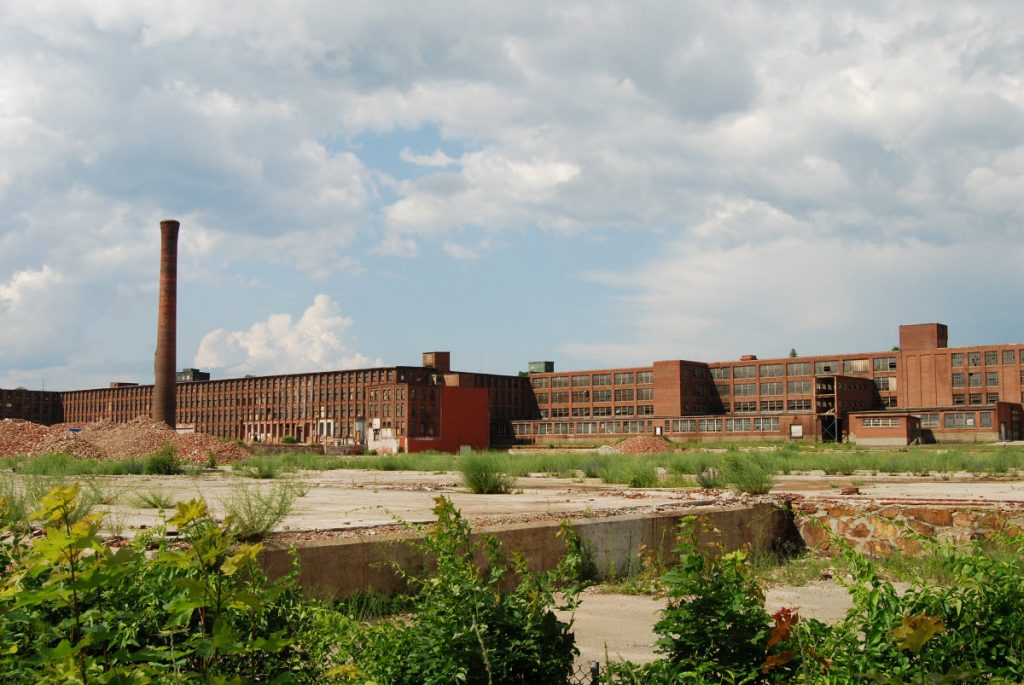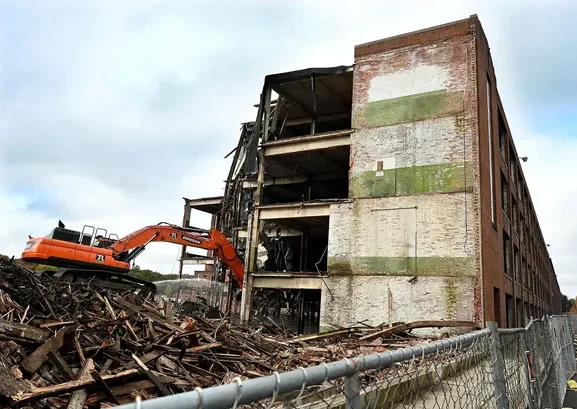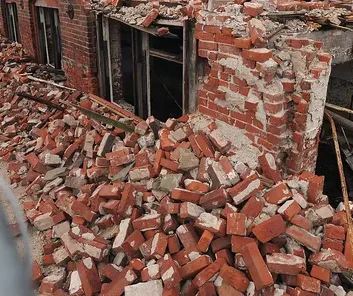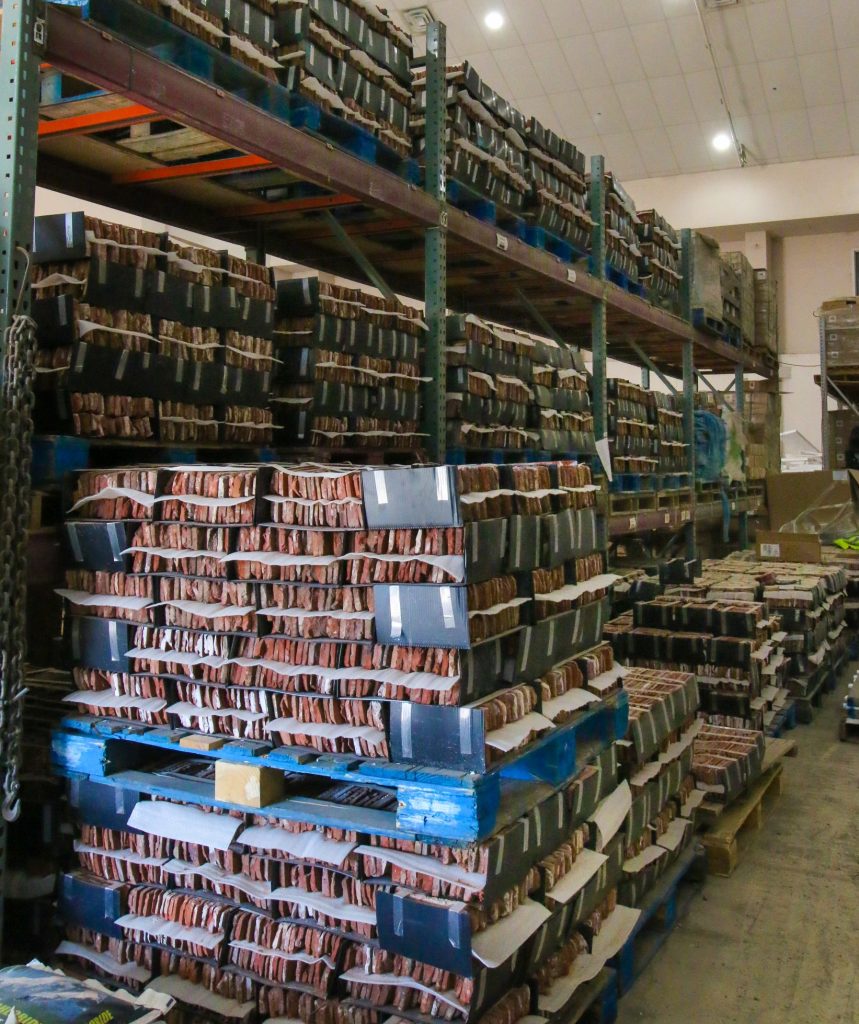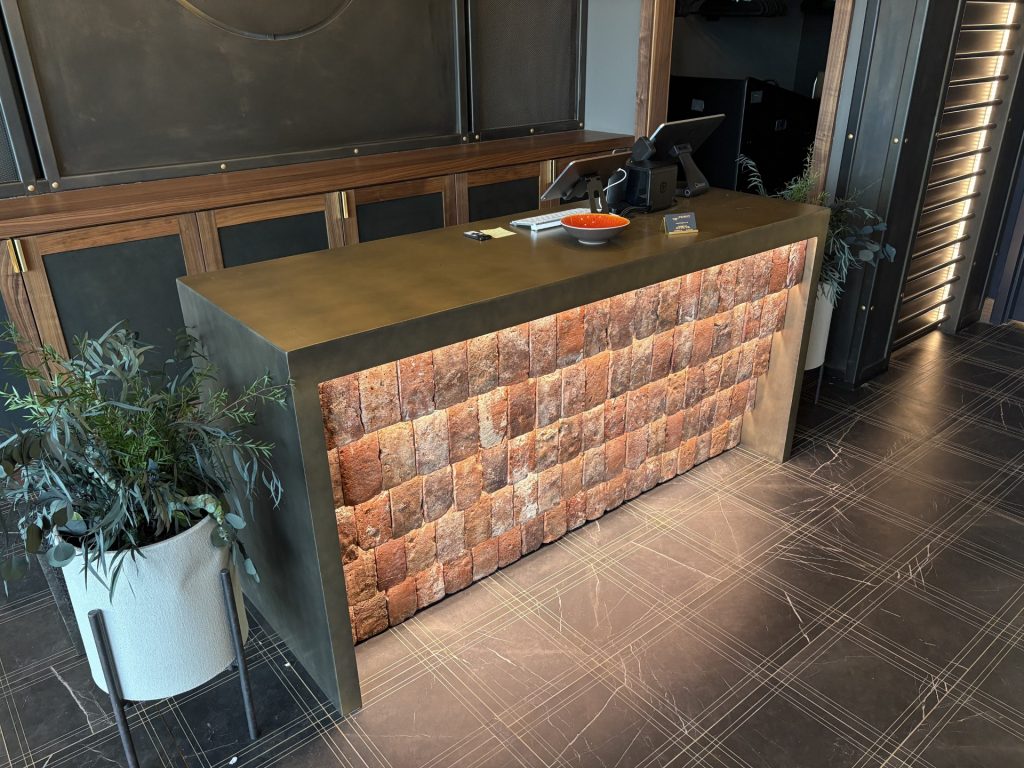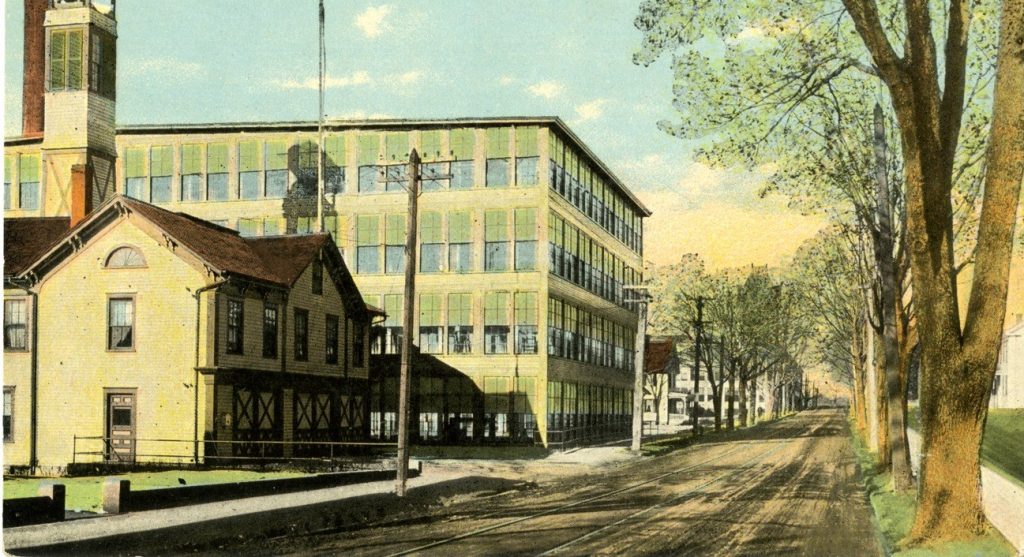
For more than 160 years, the fates of the Draper Mill and its hometown of Hopedale, Massachusetts were intertwined. It’s a familiar, American story–one that often ends with a demolition and fading memories of celebrated past.
In 2021, Stone Farm was on hand at the Draper Mill’s demolition, hoping to preserve that past by salvaging as much of its vintage brick as possible. Today, we’re thrilled both the Draper and Hopedale stories live on in modern design as part of our classic NE Mill Blend. They’re stories worth remembering.
HOPEFUL BEGINNINGS & THE RISE OF A MILL TOWN
In 1841, Adin Ballou, a Christian reformist who’s writings would later influence Mahatma Ghandi and Martin Luther King, Jr., founded a Utopian society in the town of Milford, MA. The name “Hopedale” was chosen to reflect his goal of a harmonious society based on shared labor and pacificism.
But, as was often the case, the Hopedale experiment failed. Within 15 years, the community was bankrupt and its assets were purchased by George and Ebenezer Draper. The brothers’ ancestors first arrived in America in 1650, building a successful weaving business in Massachusetts. 200 years later, the Draper brothers continued to purchase land, grew the town infrastructure, and set about making their business the heart and soul of Hopedale.
The Draper Corporation eventually grew into a world leader in the production of looms. Immigrants flocked to Hopedale looking for work and, by the 1880’s, the Drapers began constructing a massive complex of brick buildings for their expanding business.
THE DRAPER MILL FROM GLORY TO DECLINE
For a century, the Draper Mill was Hopedale. It was by far the town’s largest employer. Social life, politics, community events…everything revolved around the mill.
And the Draper Mill was brick–hundreds of thousands of bricks which became a defining characteristic of the town. The sprawling complex dominated the landscape, and became a source of civic pride when the Draper’s Northrup automatic loom revolutionized the textile industry near the turn of the century. Within 20 years, 40% of American looms were Northrups.
For more 100 years, the Draper Corporation stood atop the textile world. But, slowly, the industry began shifting toward the southern U.S., causing many New England mills to shut their doors. The Draper Mill carried on, but, by the 1960’s, the introduction of cheaper, computerized machinery from overseas sealed its fate as well.
The complex was shuttered in 1980. It sat abandoned for 40 years, a silent reminder of Hopedale’s promising beginning and celebrated peak. But also a symbol of the small town, struggling to survive losing the very thing that gave it its strength.
RECLAIMING THE DRAPER MILL
After learning about the planned demolition of the Draper Mill, and researching its history, Stone Farm jumped at the opportunity to salvage as much of the century-old brick as we could.
Since older bricks were usually set with lime-based mortars, they are generally easier to separate and clean. By comparison, newer bricks tend to be set with cement-based mortars, whose higher bond strengths result in lower yield rates. The lime-based Draper bricks were salvaged at quite a high rate.
The demolition lasted more than a year. Of the bricks Stone Farm salvaged, some were shipped directly to our yard to be sold as full face bricks, while others were sent to a mason who sawed the bricks thin for use as either wall veneer or floor tile. Upon arrival, we mixed the material with brick from other New England salvations, adding a new generation to our classic NE Mill Blend.
DRAPER MILL BRICK IN FINISHED PROJECTS
Stone Farm customers have used brick from the Draper Mill reclamation in many applications:
- Backsplashes
- Fireplace mantles and surrounds
- Accent walls
- Flooring for kitchens, mudrooms, foyers, and more
- Exterior repair work
- Garden walls and beds
- Property fences, posts and pillars
- Commercial spaces such as restaurants, bars, studios, retail stores and offices.
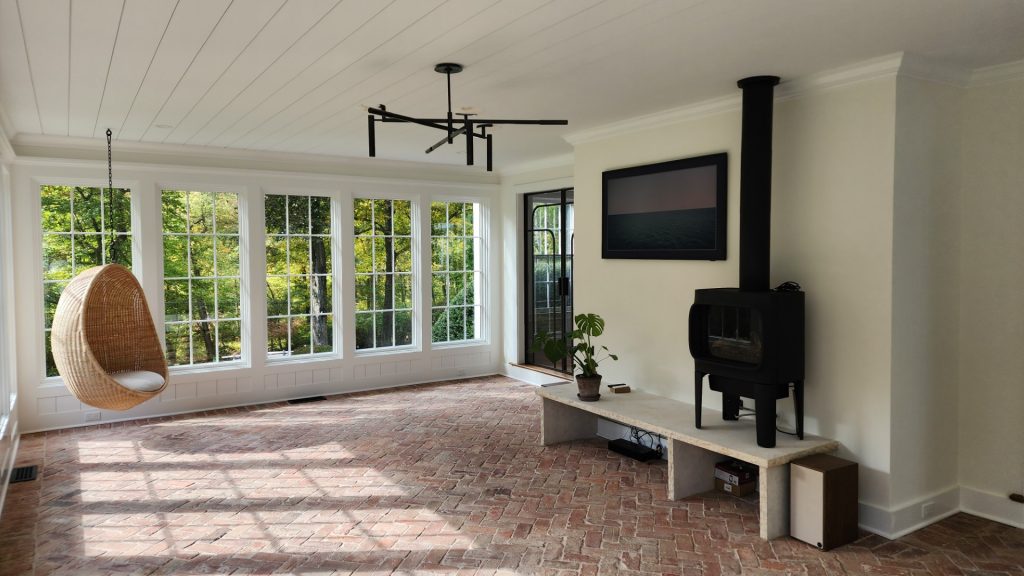
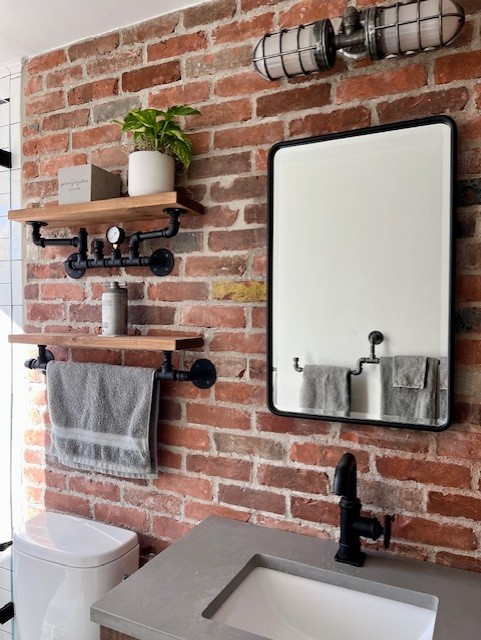
In this incredibly creative application, a restaurant used our floor tile for a hostess stand, with well-placed lighting bringing out the “perfect imperfections” you get with vintage brick.
Please visit our Finished Projects pages to see more:

